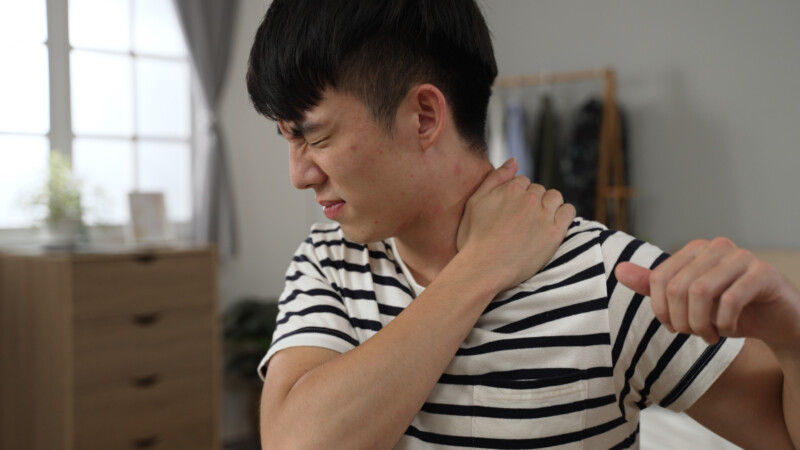Adhesive capsulitis affects the shoulder capsule and surrounding structures, has a gradual onset, and typically follows a natural course progressing through four stages. Onset, freezing, frozen, and thawing. Adhesive capsulitis is a self-limiting condition and can persist for 12 to 24 months, or longer with a diagnosis like Diabetes and lymphocytic leukemia. A person with adhesive capsulitis will typically experience continued loss of range of motion and pain before they regain range of motion and have resolution of pain in the thawing stage. During the freezing stage, a person will begin to lose range of motion of the shoulder joint. The primary focus of physical therapy treatment is reducing pain, maintaining range of motion, and maintaining cardiovascular health. During this time the treating physical therapist will advise their patient to modify daily activity to reduce pain and minimize stress on the shoulder complex. Walking daily and performing a home exercise plan are the best ways to minimize the symptoms and to work through each phase of adhesive capsulitis, until normal range of motion is restored, and a person can return to their regular daily activities without pain or limitation. If you are experiencing signs and symptoms of adhesive capsulitis, you can schedule an evaluation with a Capital Area PT therapist. In the meantime, to manage pain at home you can use heat or ice as needed and talk to your doctors about steroid injections and the use of NSAID’s.
Risk Factors
• Female and aged 40-65 years old
• Previously diagnosed with adhesive capsulitis
• Diagnosis of diabetes (Type II DM, 22.4%), hypothyroidism, prolonged immobilization, trauma, stroke, heart attack, autoimmune disease, and psychological conditions
Patients with adhesive capsulitis present with loss of shoulder active and passive multiplanar movements, impaired scapulohumeral movements, and inability to participate in daily activities due to pain and stiffness. Biomechanical and physiological impairments can be due to pathology of the capsule, ligaments, muscles, and tendons. These structures form, stabilize, and allow for mobility of the glenohumeral joint. Disruption of the biomechanics, underlying pathological changes (synovial fluid inflammation; reactive fibrotic capsule) of the glenohumeral can lead to the gradual onset of adhesive capsulitis. The presentation of adhesive capsulitis can primary (insidious onset) or secondary (intrinsic, extrinsic, or systemic).
Signs & Symptoms of Adhesive Capsulitis
• Shoulder pain and mobility deficits, gradual onset of pain and stiffness that limit sleeping, grooming, and reaching activities
• Power deficits of the muscles of the shoulder
Capital Area Physical Therapy & Wellness offers treatment options for adhesive capsulitis. Our experienced providers serve the Upstate NY Malta / Saratoga / Glens Falls & Queensbury region with physical therapy services for adhesive capsulitis.
Call (518) 289-5242 to schedule an evaluation at any of our locations, or to learn more about the services provided by our physical therapists.
References
1. Kelley MJ, Shaffer MA, Kuhn JE, et al. Shoulder pain and mobility deficits: Adhesive capsulitis. Journal of Orthopaedic & Sports Physical Therapy. 2013;43(5). doi:10.2519/jospt.2013.0302
2. Eckenrode B, Fliss T, Senese M. Adhesive Capsulitis Clinical Summary. APTA. 2016. https://www.apta.org/patient-care/evidence-based-practice-resources/clinical-summaries/adhesive-capsulitis. Accessed December 11, 2022.
3. Dutton M. Dutton’s Orthopaedic Examination, Evaluation, And Intervention.; 641-644.
4. Brumitt J. Physical Therapy Case Files. New York: McGraw-Hill Education/Medical; 2013:85-104.
5. Page P, Labbe A. Adhesive capsulitis: use the evidence to integrate your interventions. N Am J Sports Phys Ther. 2010;5(4):266-273.
6. Chan HBY, Pua PY, How CH. Physical therapy in the management of frozen shoulder. Singapore Med J. 2017;58(12):685-689. doi:10.11622/smedj.2017107
7. Kisner C, Colby L, Borstad J. Therapeutic Exercise.; 552-554.






